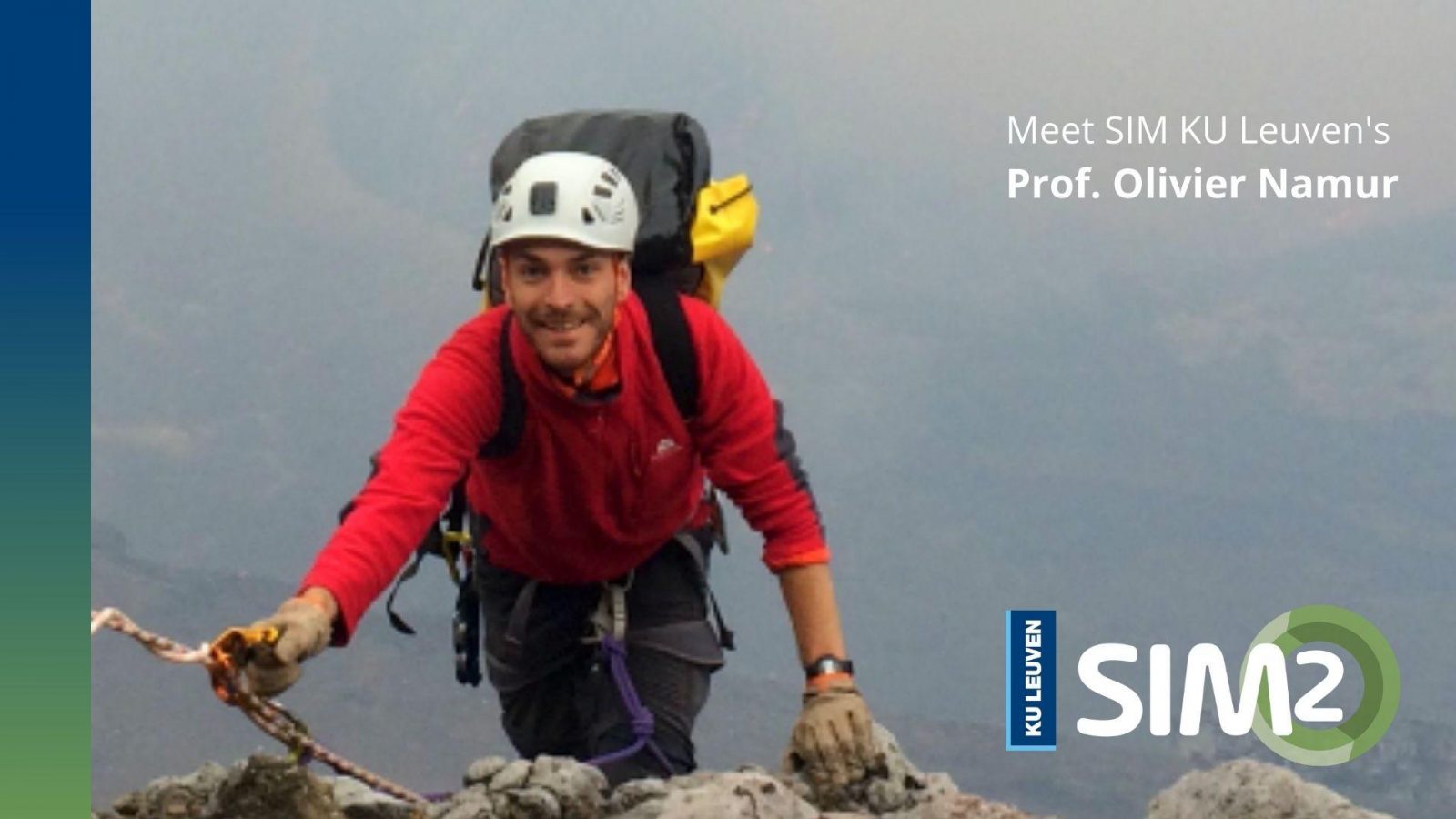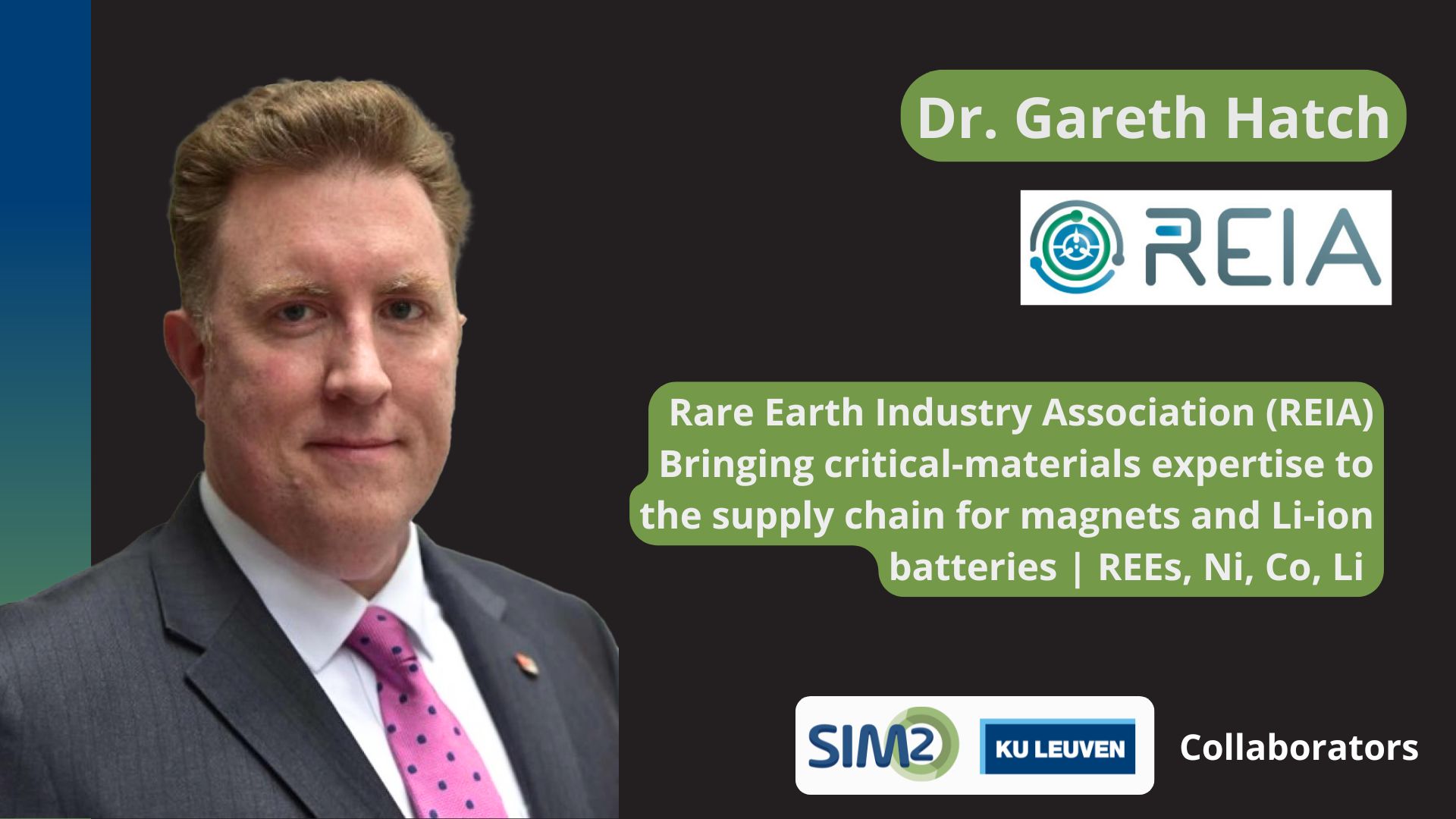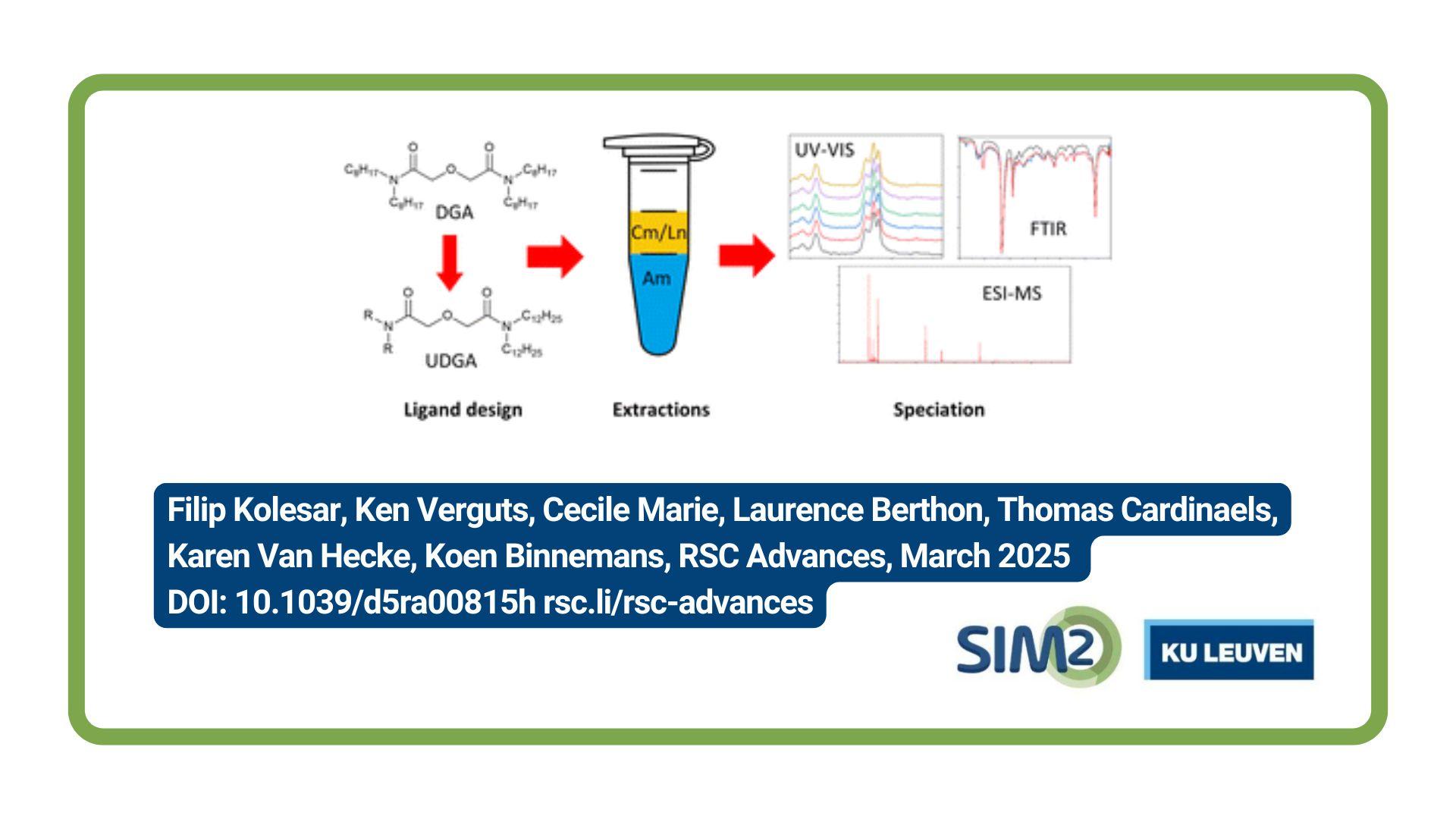With a background in igneous petrology, Olivier Namur recently started as an Assistant Professor at KU Leuven in the Department of Earth and Environmental Sciences. His research focusses on magmatic processes that lead to the chemical differentiation of the Earth’s crust and the large-scale differentiation of other planets. His work is also very relevant for a better understanding of the origin of numerous critical metals associated to hydrous magmas. In this in-depth SIM² interview you get to know more about his research activities, his personal research journey and his view on the primary mining of critical metals in Europe and elsewhere.
Before moving to Leuven you spent several years in Cambridge and Hannover. What made you decide to seek pastures new and become a Professor in Leuven?
I’ve been blessed with obtaining some prestigious postdoctoral positions in various Universities (NERC, Junior Research Fellow in Cambridge, Marie-Curie, von Humboldt). In Hannover, I was the beneficiary of a large research grant entitled “Emmy Noether”, to create a new laboratory and a research group related to crustal processes.
However, my family and my friends live in Belgium, implying that I always kept an open eye on potential positions in Belgium. The position in Leuven was particularly adequate for my research because this is a super well-equipped university, particularly with an electron microprobe that is unique in Belgium.
Since I moved, we managed to develop the laboratory even more. Another interest of the position in Leuven was the complementary research interests with other professors and the possibility to obtain internal and external funding to build a research group and a laboratory. In 2017, I obtained a large Odysseus project and an FWO ERC Runner-up project, which allowed me to recruit PhD students.
Can you describe what has been the main focus of your research until now and will this change now you start in Leuven?
My research interests are in igneous petrology with a focus on magmatic processes that lead to the chemical differentiation of the Earth’s crust and the large-scale differentiation of other planets. I use a series of state-of-the-art analytical techniques to measure major and trace elements as well as isotope ratios in rocks and minerals. I combine geochemical data together with experimental petrology, field relationships, thermodynamics, and computational modelling, geophysics to quantitatively and statistically interrogate rocks in a multidisciplinary way and tackle specific questions on mantle melting, the origin and differentiation of basalts, the formation of ore deposits and the effect of volatiles on phase equilibria.
My research on natural rocks is rooted in field work and focuses on a broad range of geological settings in both plutonic and volcanic environments on Earth. These studies contribute to improve our understanding of the mechanisms of crustal growth and crust differentiation. Together with the use of careful experiments and numerical modelling, I apply the concepts learned from magmatic processes on Earth to understand the large-scale differentiation of planetary bodies (formation of anorthosite on the Moon, mantle-core differentiation on Mercury).
Altogether, my projects contribute to a better understanding on the mechanisms of solidification and the crystallisation products of ultramafic to evolved magmas. In the near future, I’ll continue working on these topics but I will develop project using new methods such as X-ray computed tomography and cartography of trace elements using LA-ICP-MS.
Can you elaborate on how this geological research is aligned with SIM² KU Leuven’s focus on the extraction and refining of critical metals such as lithium, cobalt, Platinum Group Elements (PGEs) and rare-earth elements (REEs)?
The research I currently carry out is mostly related to active volcanoes and planetary sciences. With my current group of students, we do not work explicitly on ore deposits.
However, the work we perform on volcanoes, particularly the detailed study of the fluids in volcanoes has great potential for understanding the origin of critical metals (Cu, Au…) associated to hydrous magmas found in subduction zones.
With colleagues from Liège, Johannesburg and Cambridge, I also keep working on mafic layered intrusions and anorthositic bodies. There we focus on the formation of metal-enriched layers such as magnetite and ilmenite or the PGE-rich layers in large intrusions such as the Bushveld complex.
Part of the work we do tries to understand the process of silicate liquid immiscibility where magma splits into two different melts: a Si-rich melt and an Fe-rich melt. The latter has the potential to form deposits enriched in Ti, Fe, P, Cr, V but also other critical elements such as REEs. In relationship with this, we also work on volcanoes erupting magma extremely enriched in Fe such as El Laco in Chile.
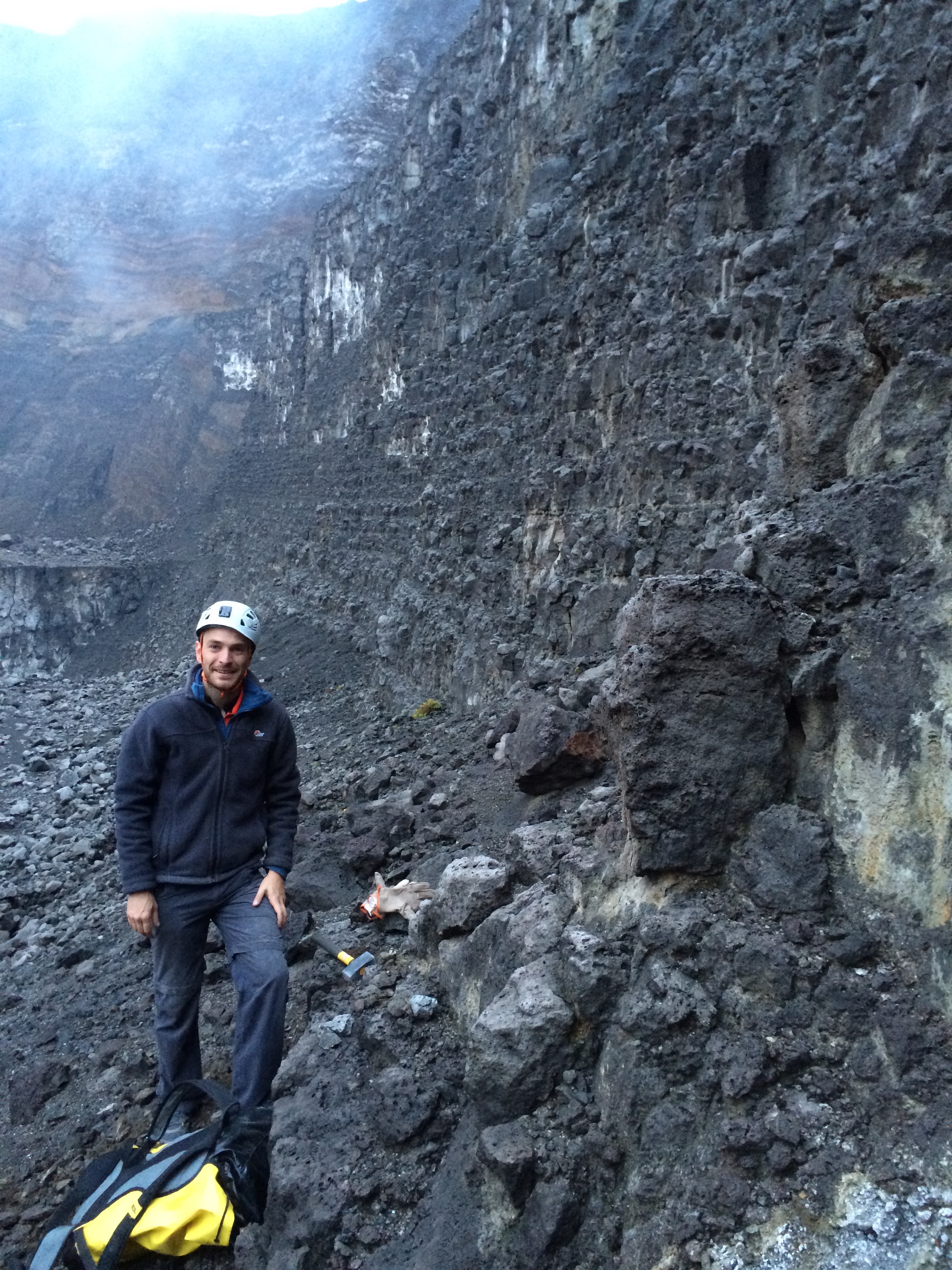
Do you believe the primary mining of critical raw materials will really come to fruition in Europe? Where do you see most potential?
Mining of critical material is already important in some countries where I’ve worked such as Norway. I believe that several other mafic layered intrusions in Norway and Finland could potentially been mined in the future.
A rock body on which I’ve actively worked, and I keep working on, is Skaergaard in south-east Greenland. Prospection and drilling in Skaergaard has been continuously performed since decades, mainly for Au but also Cu and PGEs.
My feeling about mining in Greenland is a bit mixed. Although I understand that Europe must extract raw materials locally, I also find that Greenland is such as nice place that it should stay protected from large-scale industry.
In addition, elections in Greenland have shown us that environmental concerns may preclude mining industries to obtain mining licenses.
What is your advice to EU Policymakers to develop “a path towards greater security and sustainability”?
Mining in Europe is important, but I believe more emphasis should really go out to enhanced recycling, reduced consumption, and smarter usage.
As consumers and as a society, we must reflect on how we use electronics, equipment construction and all other products that heavily rely upon the consumption of critical materials. However, Europe as a whole and individual governments must keep investing in education, formation, recycling and green industry.
Over the past years you have published numerous peer-reviewed papers. Which paper of yours are you particularly pleased with?
I can’t identify any paper I’m particularly happy with because I try to submit only papers for which I consider I have done the best possible work. However, I am quite fond of the fact that my papers cover a large range of topics, from magma chamber processes in crustal magma chambers, eruptive processes of active volcanoes to planetary sciences. I’m also happy that my work involves many different components such as natural rocks, experimental petrology, computer and thermodynamic modelling. What makes me really proud now, is that my recent papers were written by my PhD students and are based on work performed at KU Leuven facilities.
Do you have any advice for PhD students in terms of publishing papers or going about their business in their Phd work?
My advices for PhD students: (1) start to write as early as possible; don’t wait until you have all results/models available; (2) get your supervisors to read your paper continuously; don’t wait until you have a full draft to ask comments, suggestions and advice; (3) continuously interrogate yourself; can these data have different interpretations? Have I gone the extra mile to fully interpret my results?; (4) and, finally, my most important advice, is read, read, read.
It is impossible to write a good paper without knowing the literature and the last developments within your research domain. Reading papers is never a waste of time!
To conclude, are there any game-changing moments in your research career? I am referring to moments which made you fundamentally rethink your research focus and/or strategy?
There are two main game-changing moments in my career: (1) my postdoctoral stay in Cambridge where I learned many different fields of research (thermodynamic modelling, textural analysis…) and (2) my postdoctoral stay in Hannover where I learned how to write successful scientific proposals. I am still reaping the benefits of that experience as we speak.
Long may it continue and much obliged for this interview. We hope your research ideas meet with success. We definitely look forward to the further expansion of your analytical facilities, which will be in sync with SIM²’a aspirations in our Research Line on advanced resource characterisation.
[Interview: Peter Tom Jones]
Who is Prof. Olivier Namur?
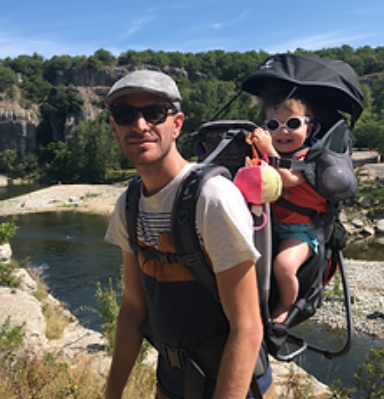
Five key publications by Prof. Olivier Namur
- Hou T., Charlier B., Holtz F., Veksler I.V., Thomas R., Zhang Z., Namur O. (2018). Immiscibile hydrous Fe-Ca-P melt and the origin of iron oxide-apatite ore deposits. Nature Communications, 1415
- Namur O., Charlier B. (2017). Silicate mineralogy of Mercury’s crust. Nature Geoscience 10, 9-13
- Namur O., Humphreys M., Holness M. (2014) Crystallization of interstitial liquid and latent heat buffering in solidifying gabbros: Skaergaard intrusion, Greenland. Journal of Petrology 55, 1389-1427
- Namur O., Charlier B., Pirard C., Hermann J., Liegeois J.P., Vander Auwera J. (2011) Anorthosite formation by plagioclase flotation in ferrobasalt and implications for the lunar crust. Geochimica et Cosmochimica Acta 75, 4998-5018
- Namur O., Charlier B., Toplis M.J., Higgins M.D., Liegeois J.P., Vander Auwera J. (2010) Crystallization sequence and magma chamber processes in the ferrobasaltic Sept Iles layered intrusion, Canada. Journal of Petrology 51, 1203-1236
Testimonial Michael Higgins (Presentation of the Mineralogical Society of America Award for 2019 to Olivier Namur)
I would like to introduce you to Olivier Namur, the 2019 MSA awardee, an outstanding young petrologist who has already advanced significantly our understanding of internal processes of the Earth, as well as other components of the solar system. (…) Olivier’s scientific flair is complemented by his generosity of spirit: He is a wonderful person to work with—he even coped with my rather special accent in French—and is a truly fitting recipient for the MSA Award.
(Full testimonial is available here)
Want to know more about SIM²?
SIM² KU Leuven is the KU Leuven Institute for Sustainable Metals and Minerals (SIM² in short). SIM² is one of the official KU Leuven Institutes that were endorsed by the KU Leuven Academic Council. SIM² has more than 240 members, coming from a wide range of (interdisciplinary) research groups and departments at KU Leuven. SIM²’s missions is “to develop, organise & implement problem-driven, science-deep research & future-oriented education, contributing to the environmentally friendly production & recycling of metals, minerals & engineered materials, supporting (…) a climate-friendly, circular-economy”.
- Read more in this featured article in Geniaal.
- Follow SIM² on LinkedIn: https://www.linkedin.com/company/18118889
- Interviews with other SIM² colleagues: https://kuleuven.sim2.be/meet-our-colleagues/



